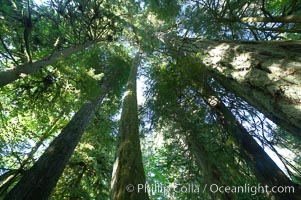
Ancient Douglas fir trees in Cathedral Grove. Cathedral Grove is home to huge, ancient, old-growth Douglas fir trees. About 300 years ago a fire killed most of the trees in this grove, but a small number of trees survived and were the originators of what is now Cathedral Grove. Western redcedar trees grow in adundance in the understory below the taller Douglas fir trees.
Species: Douglas fir, Pseudotsuga menziesii
Location: Cathedral Grove, MacMillan Provincial Park, Vancouver Island, British Columbia, Canada
Image ID: 21033
Species: Douglas fir, Pseudotsuga menziesii
Location: Cathedral Grove, MacMillan Provincial Park, Vancouver Island, British Columbia, Canada
Image ID: 21033
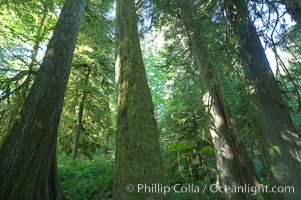
Ancient Douglas fir trees in Cathedral Grove. Cathedral Grove is home to huge, ancient, old-growth Douglas fir trees. About 300 years ago a fire killed most of the trees in this grove, but a small number of trees survived and were the originators of what is now Cathedral Grove. Western redcedar trees grow in adundance in the understory below the taller Douglas fir trees.
Species: Douglas fir, Pseudotsuga menziesii
Location: Cathedral Grove, MacMillan Provincial Park, Vancouver Island, British Columbia, Canada
Image ID: 21034
Species: Douglas fir, Pseudotsuga menziesii
Location: Cathedral Grove, MacMillan Provincial Park, Vancouver Island, British Columbia, Canada
Image ID: 21034
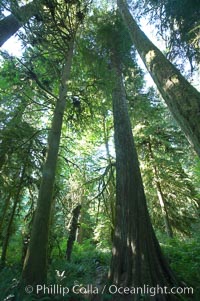
Ancient Douglas fir trees in Cathedral Grove. Cathedral Grove is home to huge, ancient, old-growth Douglas fir trees. About 300 years ago a fire killed most of the trees in this grove, but a small number of trees survived and were the originators of what is now Cathedral Grove. Western redcedar trees grow in adundance in the understory below the taller Douglas fir trees.
Species: Douglas fir, Pseudotsuga menziesii
Location: Cathedral Grove, MacMillan Provincial Park, Vancouver Island, British Columbia, Canada
Image ID: 21035
Species: Douglas fir, Pseudotsuga menziesii
Location: Cathedral Grove, MacMillan Provincial Park, Vancouver Island, British Columbia, Canada
Image ID: 21035
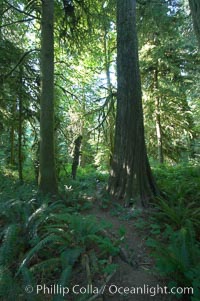
Ancient Douglas fir trees in Cathedral Grove. Cathedral Grove is home to huge, ancient, old-growth Douglas fir trees. About 300 years ago a fire killed most of the trees in this grove, but a small number of trees survived and were the originators of what is now Cathedral Grove. Western redcedar trees grow in adundance in the understory below the taller Douglas fir trees.
Species: Douglas fir, Pseudotsuga menziesii
Location: Cathedral Grove, MacMillan Provincial Park, Vancouver Island, British Columbia, Canada
Image ID: 21036
Species: Douglas fir, Pseudotsuga menziesii
Location: Cathedral Grove, MacMillan Provincial Park, Vancouver Island, British Columbia, Canada
Image ID: 21036
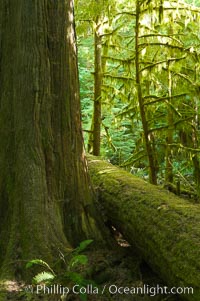
Ancient Douglas fir trees in Cathedral Grove. Cathedral Grove is home to huge, ancient, old-growth Douglas fir trees. About 300 years ago a fire killed most of the trees in this grove, but a small number of trees survived and were the originators of what is now Cathedral Grove. Western redcedar trees grow in adundance in the understory below the taller Douglas fir trees.
Species: Douglas fir, Pseudotsuga menziesii
Location: Cathedral Grove, MacMillan Provincial Park, Vancouver Island, British Columbia, Canada
Image ID: 21038
Species: Douglas fir, Pseudotsuga menziesii
Location: Cathedral Grove, MacMillan Provincial Park, Vancouver Island, British Columbia, Canada
Image ID: 21038
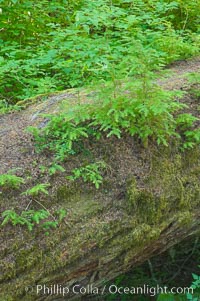
Nurse log. A fallen Douglas fir tree provides a substrate for new seedlings to prosper and grow.
Location: Cathedral Grove, MacMillan Provincial Park, Vancouver Island, British Columbia, Canada
Image ID: 21039
Location: Cathedral Grove, MacMillan Provincial Park, Vancouver Island, British Columbia, Canada
Image ID: 21039
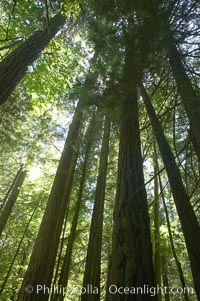
Ancient Douglas fir trees in Cathedral Grove. Cathedral Grove is home to huge, ancient, old-growth Douglas fir trees. About 300 years ago a fire killed most of the trees in this grove, but a small number of trees survived and were the originators of what is now Cathedral Grove. Western redcedar trees grow in adundance in the understory below the taller Douglas fir trees.
Species: Douglas fir, Pseudotsuga menziesii
Location: Cathedral Grove, MacMillan Provincial Park, Vancouver Island, British Columbia, Canada
Image ID: 21042
Species: Douglas fir, Pseudotsuga menziesii
Location: Cathedral Grove, MacMillan Provincial Park, Vancouver Island, British Columbia, Canada
Image ID: 21042
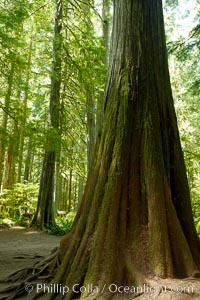
Western redcedar trees in Cathedral Grove. Cathedral Grove is home to huge, ancient, old-growth Douglas fir trees. About 300 years ago a fire killed most of the trees in this grove, but a small number of trees survived and were the originators of what is now Cathedral Grove. Western redcedar trees grow in adundance in the understory below the taller Douglas fir trees.
Location: Cathedral Grove, MacMillan Provincial Park, Vancouver Island, British Columbia, Canada
Image ID: 21043
Location: Cathedral Grove, MacMillan Provincial Park, Vancouver Island, British Columbia, Canada
Image ID: 21043
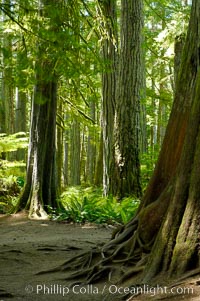
Western redcedar trees in Cathedral Grove. Cathedral Grove is home to huge, ancient, old-growth Douglas fir trees. About 300 years ago a fire killed most of the trees in this grove, but a small number of trees survived and were the originators of what is now Cathedral Grove. Western redcedar trees grow in adundance in the understory below the taller Douglas fir trees.
Location: Cathedral Grove, MacMillan Provincial Park, Vancouver Island, British Columbia, Canada
Image ID: 21045
Location: Cathedral Grove, MacMillan Provincial Park, Vancouver Island, British Columbia, Canada
Image ID: 21045
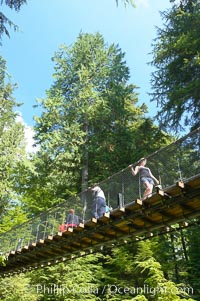
Capilano Suspension Bridge, 140 m (450 ft) long and hanging 70 m (230 ft) above the Capilano River. The two pre-stressed steel cables supporting the bridge are each capable of supporting 45,000 kgs and together can hold about 1300 people.
Location: Capilano Suspension Bridge, Vancouver, British Columbia, Canada
Image ID: 21146
Location: Capilano Suspension Bridge, Vancouver, British Columbia, Canada
Image ID: 21146
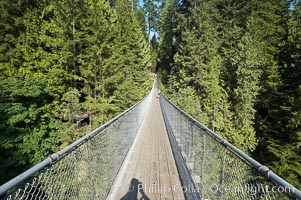
Capilano Suspension Bridge, 140 m (450 ft) long and hanging 70 m (230 ft) above the Capilano River. The two pre-stressed steel cables supporting the bridge are each capable of supporting 45,000 kgs and together can hold about 1300 people.
Location: Capilano Suspension Bridge, Vancouver, British Columbia, Canada
Image ID: 21147
Location: Capilano Suspension Bridge, Vancouver, British Columbia, Canada
Image ID: 21147
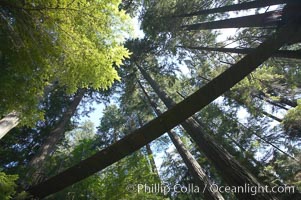
Suspension bridge in forest of Douglas fir and Western hemlock trees.
Location: Capilano Suspension Bridge, Vancouver, British Columbia, Canada
Image ID: 21148
Location: Capilano Suspension Bridge, Vancouver, British Columbia, Canada
Image ID: 21148
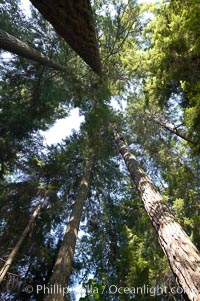
Douglas fir and Western hemlock trees reach for the sky in a British Columbia temperate rainforest.
Location: Capilano Suspension Bridge, Vancouver, British Columbia, Canada
Image ID: 21149
Location: Capilano Suspension Bridge, Vancouver, British Columbia, Canada
Image ID: 21149
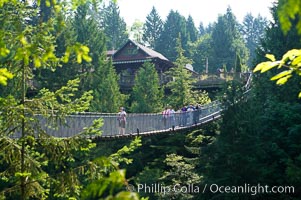
Capilano Suspension Bridge, 140 m (450 ft) long and hanging 70 m (230 ft) above the Capilano River. The two pre-stressed steel cables supporting the bridge are each capable of supporting 45,000 kgs and together can hold about 1300 people.
Location: Capilano Suspension Bridge, Vancouver, British Columbia, Canada
Image ID: 21150
Location: Capilano Suspension Bridge, Vancouver, British Columbia, Canada
Image ID: 21150
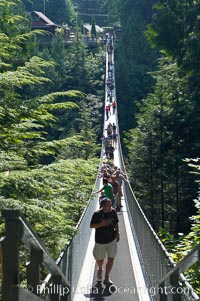
Capilano Suspension Bridge, 140 m (450 ft) long and hanging 70 m (230 ft) above the Capilano River. The two pre-stressed steel cables supporting the bridge are each capable of supporting 45,000 kgs and together can hold about 1300 people.
Location: Capilano Suspension Bridge, Vancouver, British Columbia, Canada
Image ID: 21151
Location: Capilano Suspension Bridge, Vancouver, British Columbia, Canada
Image ID: 21151
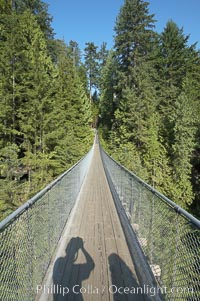
Capilano Suspension Bridge, 140 m (450 ft) long and hanging 70 m (230 ft) above the Capilano River. The two pre-stressed steel cables supporting the bridge are each capable of supporting 45,000 kgs and together can hold about 1300 people.
Location: Capilano Suspension Bridge, Vancouver, British Columbia, Canada
Image ID: 21152
Location: Capilano Suspension Bridge, Vancouver, British Columbia, Canada
Image ID: 21152
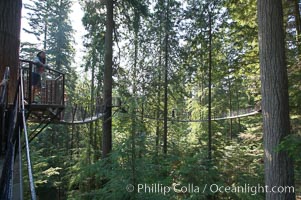
Suspension bridge in forest of Douglas fir and Western hemlock trees.
Location: Capilano Suspension Bridge, Vancouver, British Columbia, Canada
Image ID: 21154
Location: Capilano Suspension Bridge, Vancouver, British Columbia, Canada
Image ID: 21154
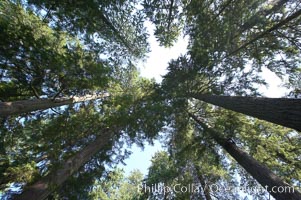
Douglas fir and Western hemlock trees reach for the sky in a British Columbia temperate rainforest.
Location: Capilano Suspension Bridge, Vancouver, British Columbia, Canada
Image ID: 21155
Location: Capilano Suspension Bridge, Vancouver, British Columbia, Canada
Image ID: 21155
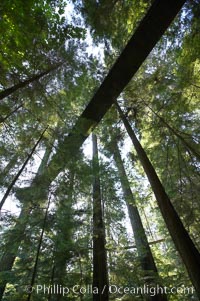
Suspension bridge in forest of Douglas fir and Western hemlock trees.
Location: Capilano Suspension Bridge, Vancouver, British Columbia, Canada
Image ID: 21156
Location: Capilano Suspension Bridge, Vancouver, British Columbia, Canada
Image ID: 21156
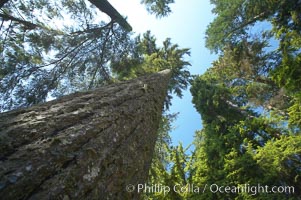
Douglas fir and Western hemlock trees reach for the sky in a British Columbia temperate rainforest.
Location: Capilano Suspension Bridge, Vancouver, British Columbia, Canada
Image ID: 21157
Location: Capilano Suspension Bridge, Vancouver, British Columbia, Canada
Image ID: 21157
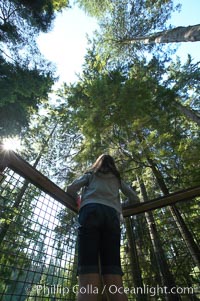
Douglas fir and Western hemlock trees reach for the sky in a British Columbia temperate rainforest.
Location: Capilano Suspension Bridge, Vancouver, British Columbia, Canada
Image ID: 21158
Location: Capilano Suspension Bridge, Vancouver, British Columbia, Canada
Image ID: 21158
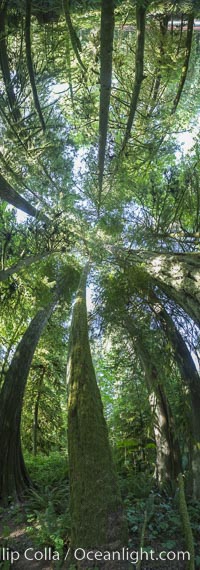
Ancient Douglas fir trees in Cathedral Grove. Cathedral Grove is home to huge, ancient, old-growth Douglas fir trees. About 300 years ago a fire killed most of the trees in this grove, but a small number of trees survived and were the originators of what is now Cathedral Grove. Western redcedar trees grow in adundance in the understory below the taller Douglas fir trees.
Species: Douglas fir tree, Pseudotsuga menziesii
Location: Cathedral Grove, MacMillan Provincial Park, Vancouver Island, British Columbia, Canada
Image ID: 22457
Panorama dimensions: 8838 x 3324
Species: Douglas fir tree, Pseudotsuga menziesii
Location: Cathedral Grove, MacMillan Provincial Park, Vancouver Island, British Columbia, Canada
Image ID: 22457
Panorama dimensions: 8838 x 3324
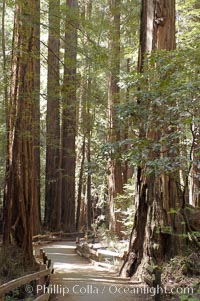
Coastal redwoods and Douglas firs dominate the Muir Woods National Monument north of San Francisco. Coast redwoods are the worlds tallest living species and second-most massive tree (after the giant Sequoia), reaching 370 ft in height and 22 ft in diameter. Muir Woods National Monument, Golden Gate National Recreation Area, north of San Francisco.
Species: Coastal redwood, Pseudotsuga menziesii, Sequoia sempervirens
Location: Muir Woods National Monument, California
Image ID: 09074
Species: Coastal redwood, Pseudotsuga menziesii, Sequoia sempervirens
Location: Muir Woods National Monument, California
Image ID: 09074
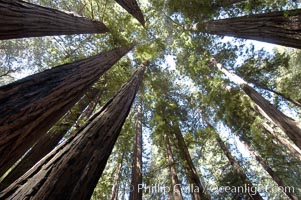
Coastal redwoods and Douglas firs dominate the Muir Woods National Monument north of San Francisco. Coast redwoods are the worlds tallest living species and second-most massive tree (after the giant Sequoia), reaching 370 ft in height and 22 ft in diameter. Muir Woods National Monument, Golden Gate National Recreation Area, north of San Francisco.
Species: Coastal redwood, Pseudotsuga menziesii, Sequoia sempervirens
Location: Muir Woods National Monument, California
Image ID: 09075
Species: Coastal redwood, Pseudotsuga menziesii, Sequoia sempervirens
Location: Muir Woods National Monument, California
Image ID: 09075
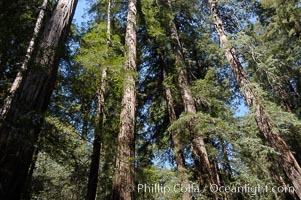
Coastal redwoods and Douglas firs dominate the Muir Woods National Monument north of San Francisco. Coast redwoods are the worlds tallest living species and second-most massive tree (after the giant Sequoia), reaching 370 ft in height and 22 ft in diameter. Muir Woods National Monument, Golden Gate National Recreation Area, north of San Francisco.
Species: Coastal redwood, Pseudotsuga menziesii, Sequoia sempervirens
Location: Muir Woods National Monument, California
Image ID: 09076
Species: Coastal redwood, Pseudotsuga menziesii, Sequoia sempervirens
Location: Muir Woods National Monument, California
Image ID: 09076
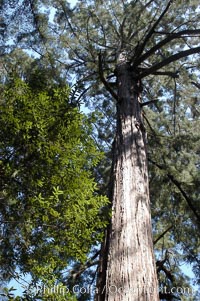
Coastal redwoods and Douglas firs dominate the Muir Woods National Monument north of San Francisco. Coast redwoods are the worlds tallest living species and second-most massive tree (after the giant Sequoia), reaching 370 ft in height and 22 ft in diameter. Muir Woods National Monument, Golden Gate National Recreation Area, north of San Francisco.
Species: Coastal redwood, Pseudotsuga menziesii, Sequoia sempervirens
Location: Muir Woods National Monument, California
Image ID: 09077
Species: Coastal redwood, Pseudotsuga menziesii, Sequoia sempervirens
Location: Muir Woods National Monument, California
Image ID: 09077
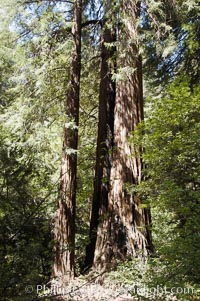
Coastal redwoods and Douglas firs dominate the Muir Woods National Monument north of San Francisco. Coast redwoods are the worlds tallest living species and second-most massive tree (after the giant Sequoia), reaching 370 ft in height and 22 ft in diameter. Muir Woods National Monument, Golden Gate National Recreation Area, north of San Francisco.
Species: Coastal redwood, Pseudotsuga menziesii, Sequoia sempervirens
Location: Muir Woods National Monument, California
Image ID: 09078
Species: Coastal redwood, Pseudotsuga menziesii, Sequoia sempervirens
Location: Muir Woods National Monument, California
Image ID: 09078
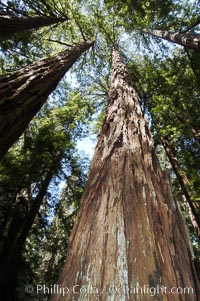
Coastal redwoods and Douglas firs dominate the Muir Woods National Monument north of San Francisco. Coast redwoods are the worlds tallest living species and second-most massive tree (after the giant Sequoia), reaching 370 ft in height and 22 ft in diameter. Muir Woods National Monument, Golden Gate National Recreation Area, north of San Francisco.
Species: Coastal redwood, Pseudotsuga menziesii, Sequoia sempervirens
Location: Muir Woods National Monument, California
Image ID: 09079
Species: Coastal redwood, Pseudotsuga menziesii, Sequoia sempervirens
Location: Muir Woods National Monument, California
Image ID: 09079
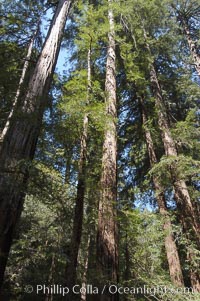
Coastal redwoods and Douglas firs dominate the Muir Woods National Monument north of San Francisco. Coast redwoods are the worlds tallest living species and second-most massive tree (after the giant Sequoia), reaching 370 ft in height and 22 ft in diameter. Muir Woods National Monument, Golden Gate National Recreation Area, north of San Francisco.
Species: Coastal redwood, Pseudotsuga menziesii, Sequoia sempervirens
Location: Muir Woods National Monument, California
Image ID: 09080
Species: Coastal redwood, Pseudotsuga menziesii, Sequoia sempervirens
Location: Muir Woods National Monument, California
Image ID: 09080
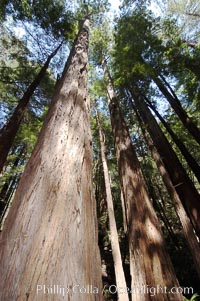
Coastal redwoods and Douglas firs dominate the Muir Woods National Monument north of San Francisco. Coast redwoods are the worlds tallest living species and second-most massive tree (after the giant Sequoia), reaching 370 ft in height and 22 ft in diameter. Muir Woods National Monument, Golden Gate National Recreation Area, north of San Francisco.
Species: Coastal redwood, Pseudotsuga menziesii, Sequoia sempervirens
Location: Muir Woods National Monument, California
Image ID: 09081
Species: Coastal redwood, Pseudotsuga menziesii, Sequoia sempervirens
Location: Muir Woods National Monument, California
Image ID: 09081